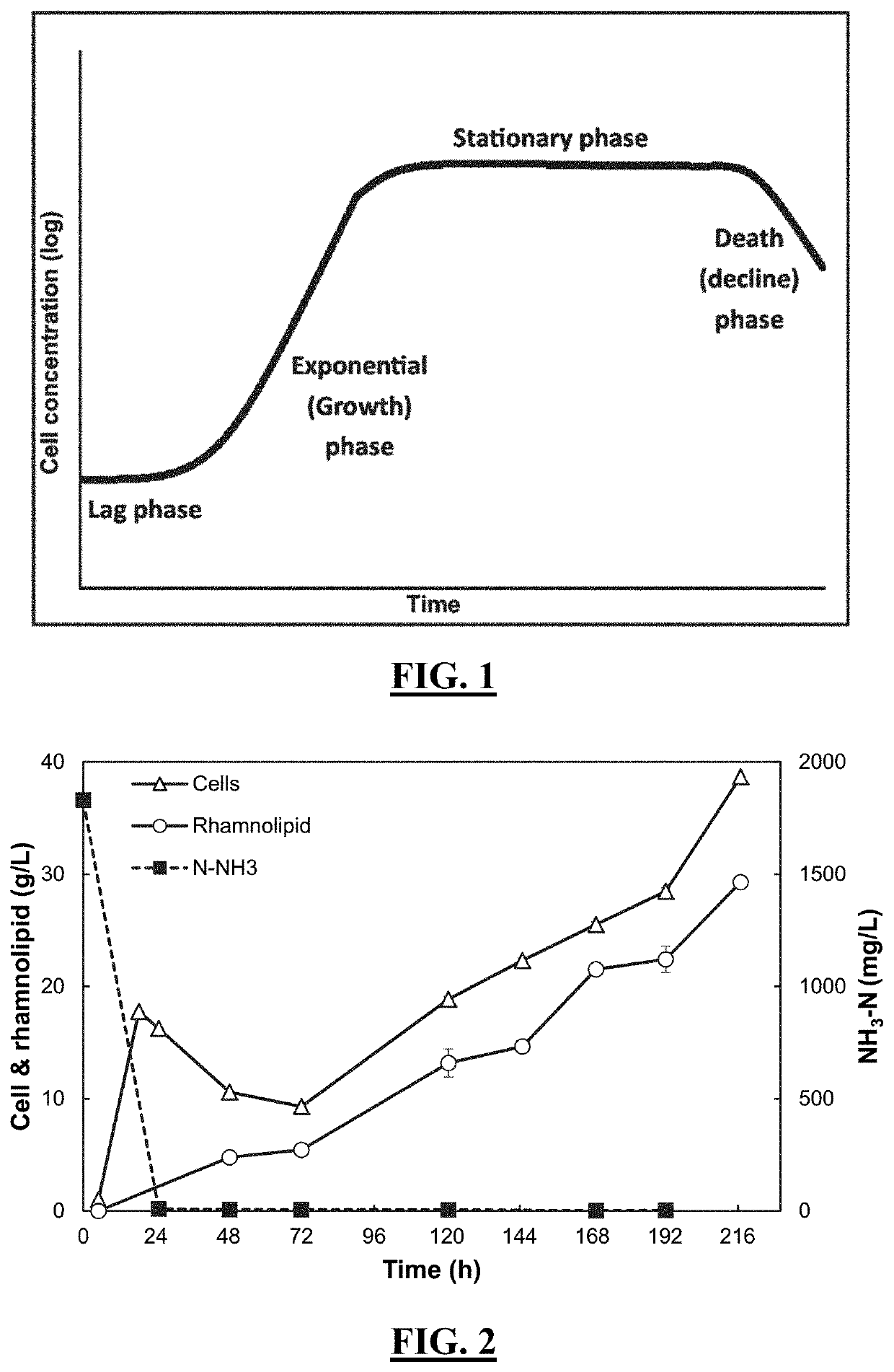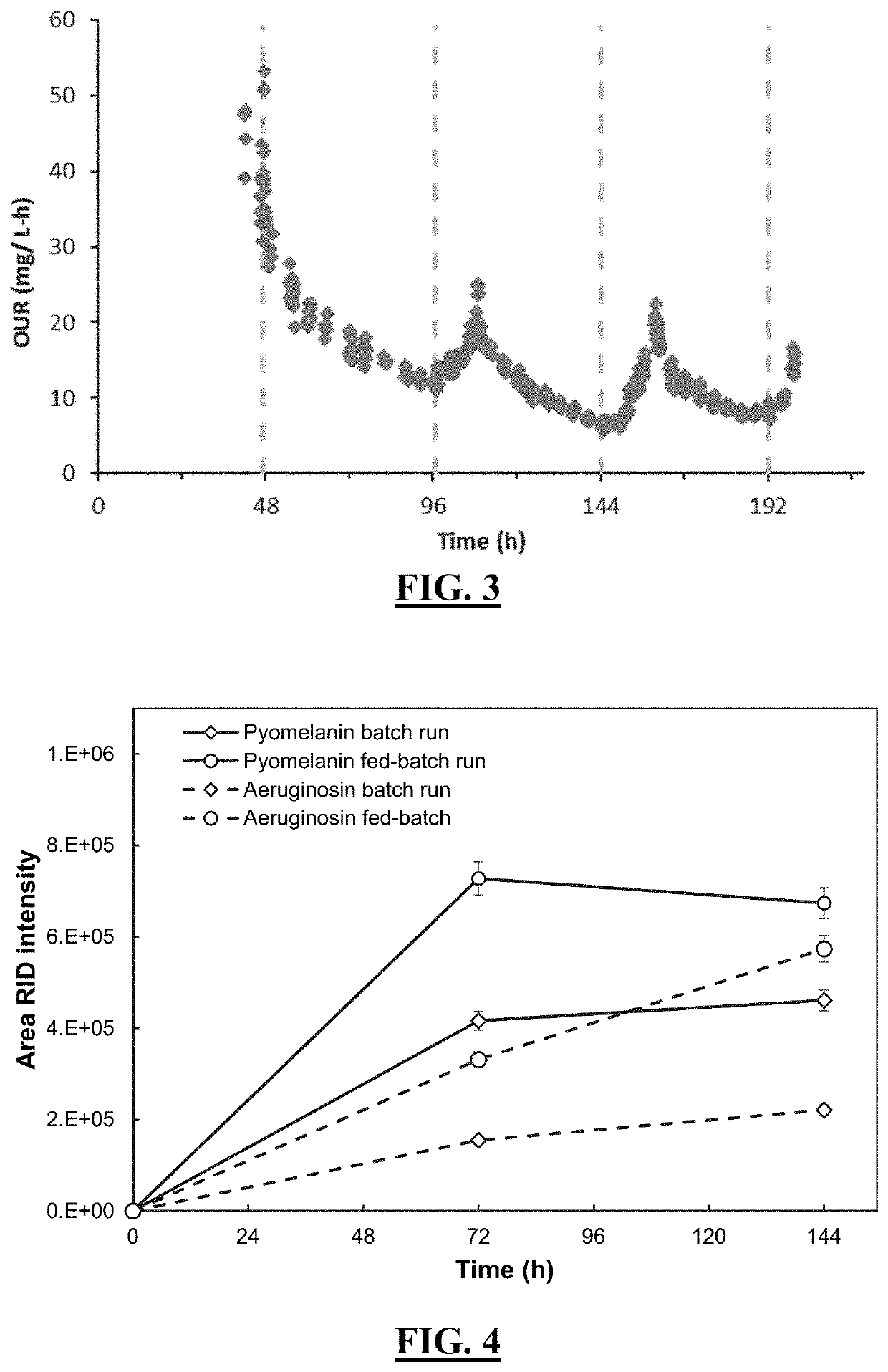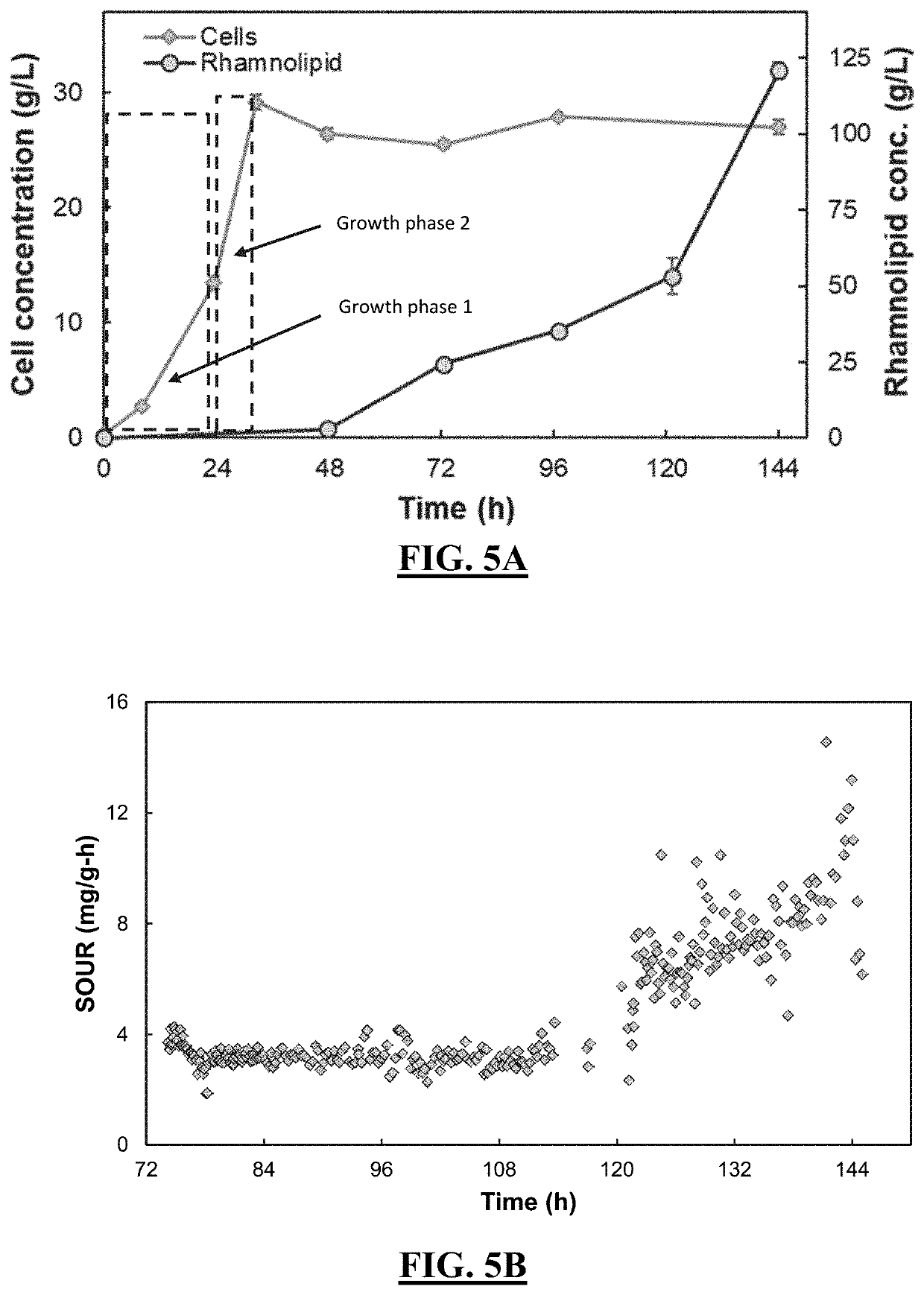Production of fermentation products containing rhamnolipids
- Summary
- Abstract
- Description
- Claims
- Application Information
AI Technical Summary
Benefits of technology
Problems solved by technology
Method used
Image
Examples
example 1
Evaluation of Rhamnolipids Production Under Varied Production Conditions
[0127]In order to better illustrate and further reduce embodiments of the present invention to practice, P. aeruginosa was used to produce rhamnolipids under varied production conditions. In these experiments, rhamnolipids were first made using the commonly employed nitrogen-limited stationary phase, but with different N-source supplementation rates and their long-term rhamnolipid production were evaluated and their specific productivity (qp) calculated and evaluated. In this first set of experiments, it was found that the intermittent cell growth due to N-source addition led to lower qp, particularly apparent at the highest addition rate. In a second set of experiments, four fermentations were made using a non-N-limited stationary phase without and with N-source supplementation and it was found that qp could be much higher. In a third set of experiments, three fermentations were designed to build a maximum cell...
example 2
Evaluation of Rhamnolipid Productivity in Long Fermentation Runs
[0162]The effects of different ways of periodic N-source addition on the sustainability of long-term rhamnolipid production and the yield and productivities obtained, both volumetric (g / L-h) and specific (g / gCDW-h, where CDW stands for cell dry weight) were evaluated. The objective was to improve rhamnolipid productivity in long fermentation runs and improve understanding of the bacterial metabolic processes involved in rhamnolipid production to design and devise techniques to improve the product concentrations and yields which can improve the overall process economics.
Materials and Methods
Bacterial Culture Preparation
[0163]The Pseudomonas aeruginosa bacterium used in this study was the same rhamnolipid-producing bacterium used in Example one above. The seed culture was activated and grown as set forth above in Example 1.
Fermentor Study
[0164]As in Example 1, these experiments were carried out in 2-L fermentors (BIOFLO 1...
example 3
Evaluation of Excessive Foam Formation
[0179]In these experiments, different feeding strategies were evaluated to achieve a final rhamnolipid concentration of 105 g / L and overall volumetric productivity of 731 mg / L-h. A high cell concentration is desired during the fermentation process for achieving high volumetric productivity. However, as the cell respiration rate is directly proportional to the cell growth rate, building up a high cell concentration often leads to excessive foam formation due to high aeration rates. Thus, a two-stage fermentation design was developed in this study by using controlled feeding of N-source to achieve sustained high cell and rhamnolipid concentration profiles.
Materials an Methods
Bacterial Culture Preparation
[0180]The Pseudomonas aeruginosa bacterium used in this study was the same rhamnolipid-producing bacterium used in Example 1 above. The seed culture was activated and grown as set forth above in Example 1.
Fermenter Study
[0181]As in Examples 1 and 2...
PUM
 Login to View More
Login to View More Abstract
Description
Claims
Application Information
 Login to View More
Login to View More - R&D
- Intellectual Property
- Life Sciences
- Materials
- Tech Scout
- Unparalleled Data Quality
- Higher Quality Content
- 60% Fewer Hallucinations
Browse by: Latest US Patents, China's latest patents, Technical Efficacy Thesaurus, Application Domain, Technology Topic, Popular Technical Reports.
© 2025 PatSnap. All rights reserved.Legal|Privacy policy|Modern Slavery Act Transparency Statement|Sitemap|About US| Contact US: help@patsnap.com



